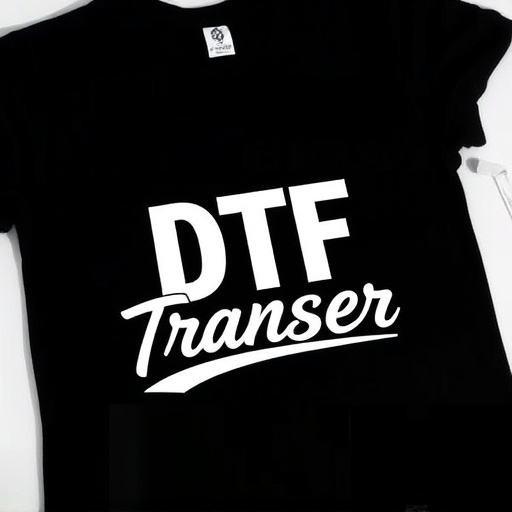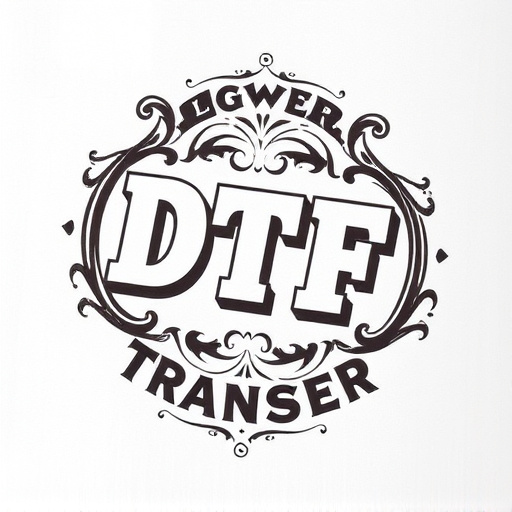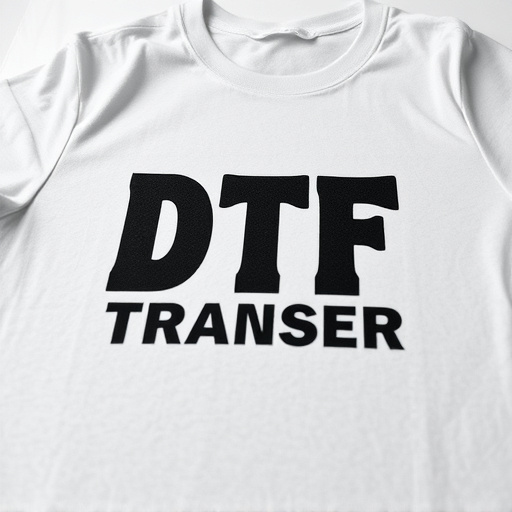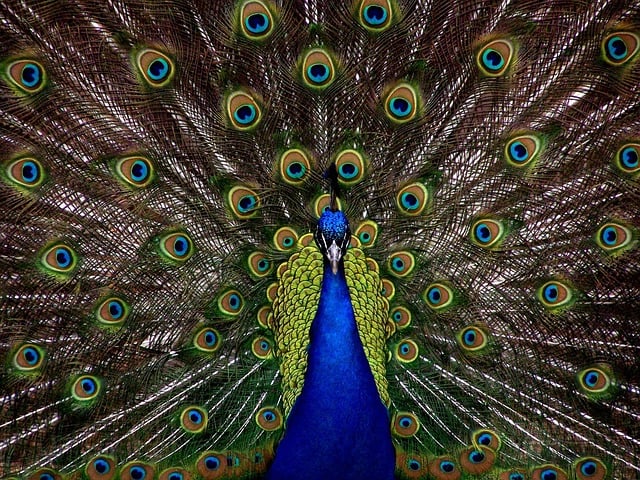Direct-to-film (DTF) transfers thrive on proper adhesion for durability and visual appeal. Key factors include surface preparation, adhesive selection, temperature control, humidity management, and timing precision. Ideal environmental conditions, from 20°C to 25°C (68°F to 77°F) and relative humidity around 40-60%, ensure strong bonds. Best practices involve cleaning surfaces, using compatible adhesives, controlling pressure and temperature during application, and storing DTF prints in cool, dry environments away from sunlight. Following these guidelines maximizes the lifespan of vibrant, long-lasting DTF transfers for diverse applications.
Direct-to-film (DTF) transfers have revolutionized various industries with their vibrant and durable prints. However, ensuring optimal adhesion is crucial for long-lasting DTF results. This article delves into the intricacies of DTF transfer adhesion, exploring key factors, optimal conditions, and environmental considerations. Learn how to calculate transfer durability, prevent premature peeling, and employ advanced techniques to maximize the lifespan of your DTF prints, ensuring they remain intact under diverse conditions.
- Understanding DTF Transfer Adhesion: Key Factors Influencing Stickiness
- Optimal Conditions for DTF Adhesion: Temperature and Surface Preparation
- Time is Money: Calculating DTF Transfer Durability for Different Applications
- Longevity of DTF Prints: Environmental Factors to Consider
- Common Pitfalls in DTF Adhesion: Preventing Early Peeling or Failure
- Advanced Techniques for Maximizing DTF Transfer Lifespan
Understanding DTF Transfer Adhesion: Key Factors Influencing Stickiness

Direct-to-film (DTF) transfers have revolutionized the way we approach graphic applications on various surfaces, offering a durable and aesthetically pleasing solution. Understanding the adhesion process is crucial for ensuring the longevity and quality of DTF prints. Several key factors play a significant role in determining how well a DTF transfer adheres to a substrate. One of the primary influences is the surface preparation; a clean, roughened, or primed surface can significantly enhance adhesion. The type of adhesive used is another critical aspect, as different adhesives are designed for specific materials and conditions, ensuring optimal bonding strength.
Temperature and pressure during application also contribute to adhesion. Heating the DTF film and substrate to the recommended temperatures facilitates the softening of the adhesive layer, allowing it to bond more effectively with the material’s surface. Applying appropriate pressure ensures that all air bubbles are removed, creating a continuous contact between the transfer and the substrate. Furthermore, the humidity level in the environment can impact adhesion, as moisture can either aid or hinder the process, depending on the specific DTF printing technique used.
Optimal Conditions for DTF Adhesion: Temperature and Surface Preparation

For optimal adhesion of direct-to-film (DTF) transfers, maintaining specific environmental conditions is crucial. The ideal temperature for DTF printing and adhesion ranges between 20°C and 25°C (68°F to 77°F). Exceeding or falling outside this range can impact the quality and longevity of DTF prints. For instance, lower temperatures may hinder proper chemical reactions necessary for strong bonds, while significantly higher temperatures can cause the film to soften or distort.
Surface preparation is another critical factor. Cleanliness and dryness are paramount. Any grease, dust, or moisture on the substrate can lead to poor adhesion. Before applying DTF transfers, surfaces should be thoroughly cleaned using appropriate solvents or degreasers, then allowed to dry completely. Additionally, priming the surface with a compatible adhesive promoter can enhance bonding capabilities, ensuring DTF prints remain secure and vibrant for extended periods.
Time is Money: Calculating DTF Transfer Durability for Different Applications

Time is a critical factor in direct-to-film (DTF) transfers, as it directly impacts both efficiency and longevity. When calculating the durability of DTF prints for various applications, understanding that time equals money becomes paramount. For instance, longer exposure times might be required for complex designs or robust adhesion on challenging surfaces, factoring into the overall project timeline and cost.
Different materials, inks, and application methods influence the duration needed for proper adhesion. Efficient DTF printing processes aim to minimize downtime between steps while ensuring each phase, from preparation to curing, is completed optimally. This precision timing guarantees that each DTF transfer not only adheres correctly but also maintains its integrity over time, making it a reliable choice for diverse applications, from signages and decorations to specialized industrial markings.
Longevity of DTF Prints: Environmental Factors to Consider

The longevity of Direct-to-Film (DTF) prints is influenced by various environmental factors that can impact their durability and adhesion over time. One key consideration is temperature, as extreme heat or cold can weaken the bond between the film and the substrate, leading to premature fading or peeling. Proper storage conditions are crucial; ideal environments maintain consistent temperatures and humidity levels, protecting DTF prints from moisture-related damage and preventing them from becoming brittle.
Additionally, exposure to direct sunlight plays a significant role in the deterioration of DTF transfers. UV rays can degrade the inks used in these prints, causing colors to fade faster. Indoor display locations or using protective coatings can extend the lifespan of DTF prints, ensuring their vibrant appearance for extended periods. Understanding and mitigating these environmental factors are essential for maintaining the integrity of DTF transfers, preserving their visual quality, and guaranteeing their intended duration as decorative or promotional materials.
Common Pitfalls in DTF Adhesion: Preventing Early Peeling or Failure

Direct-to-film (DTF) transfers are a popular choice for creating durable and high-quality prints on various surfaces. However, achieving proper adhesion is crucial to ensure the longevity of these transfers. One of the most common issues users face with DTF printing is early peeling or failure of the transfer, which can be frustrating and impact the overall quality of the final product.
To prevent these pitfalls, it’s essential to follow best practices when applying DTF transfers. This includes preparing the surface thoroughly by cleaning and de-greasing it to ensure optimal adhesion. Additionally, using a suitable adhesive designed for DTF transfers and allowing enough time for the adhesive to set properly can significantly reduce the risk of early peeling or failure. Users should also be mindful of temperature and humidity levels during application, as extreme conditions can negatively affect adhesion. Finally, applying even pressure while pressing the transfer into place and avoiding excessive heat or aggressive scraping techniques will contribute to a more successful and long-lasting DTF print.
Advanced Techniques for Maximizing DTF Transfer Lifespan

To maximize the lifespan of a direct-to-film (DTF) transfer, several advanced techniques can be employed. First, optimal storage conditions are paramount. DTF prints should be kept in a cool, dry place away from direct sunlight and heat sources. This prevents the degradation of the transfer’s adhesive properties over time. Additionally, using protective coatings or laminates can extend the lifespan by shielding the print from environmental factors and physical damage.
Second, proper application techniques are crucial. Ensuring clean and smooth surfaces before applying the DTF transfer minimizes air bubbles and improves adhesion. Using specialized adhesives designed for DTF printing further enhances bonding strength. Moreover, pre-testing on scrap material allows for adjustments in pressure and time during the actual application, ensuring optimal results and prolonging the print’s lifespan.














